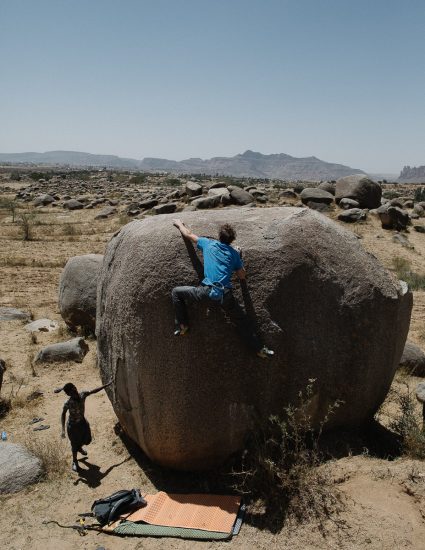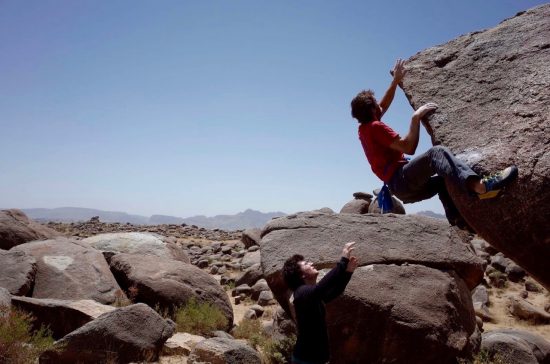Ethiopia is one of the cradles of modern humanity and has plenty more to offer than just history and culture. The diverse landscape of the Ethiopian Highlands, offering a wide range of rock formations, makes Ethiopia an interesting destination for climbers as well. But why choose a country where hardly any areas have yet been opened up and very little is known about the quality of the rock climbing? For SKYLOTEC athlete Michael “Much” Mayr and his climbing partner Hansjörg Auer, it was a mixture of curiosity and a thirst for adventure. The idea came about after listening to the stories of a friend, who had adopted a child from the region years ago and was always raving about the impressive sandstone mountains. Also, the climate in the Ethiopian Highlands still allows for activities in the sun in March, which can never be taken for granted in Africa – not without reason as it is home to the hottest place on the planet.

For Much and Hansjörg, these were good enough reasons to take a closer look at the region and test the rock faces for themselves and so it wasn't long before the flights were booked. However, soon after that, the project looked like it would fail due to political unrest in the region, as a state of emergency was declared and travel warnings were issued. Fortunately, the situation stabilised once more and they were able to spend a few weeks in the Ethiopian Highlands, where they explored a wide variety of climbing spots in the Tigray Mountains. The quality of the volcanic stone around Adwa was often replaced by grass and vegetation on multi-pitch routes and it was not quite what Much and his partner would have wished for, but the country did offer a fair amount of climbing.

However, the original plan to make a first ascent of the highest mountain in the region via a new route had to be put on ice for the time being. The 350 metre high wall of the Samayata offers some interesting possibilities for first ascents, but after three hours of climbing, Much and Hansjörg saw that several bearded vultures were nesting on the route they had decided to take. With a wingspan of up to 2.90 m, bearded vultures are amongst the world’s largest birds that are capable of flying, and so you don’t really want to get too close to these creatures. Even though the trad route they had worked out using binoculars was not possible, Much and Hansjörg went on to discover a great project for the future, which will, however, only be achievable in the free climbing style with the help of a drill.
Before returning to their homes in Austria, they still had a few problems to solve on top quality granite boulders at the foot of the Tigray sandstone mountains.
It’s not yet clear when they will be able to go back to achieve their free climbing plans. The desire is there, but first on the agenda is a project in the Marmolada mountains for summer and a trip to India in the autumn.

